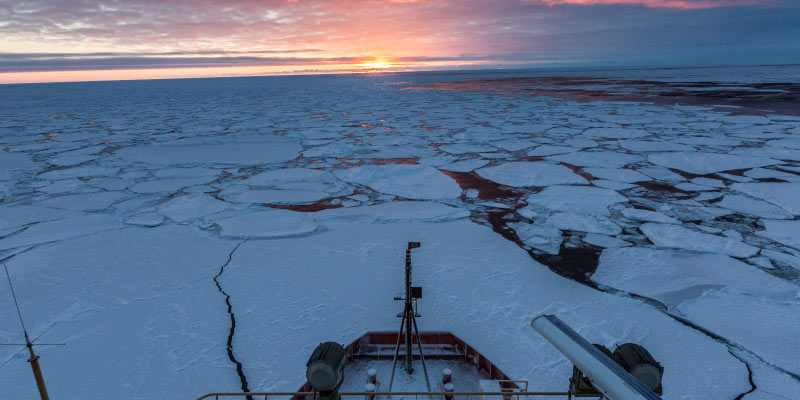
For decades, scientists have watched as the sea ice cover around Antarctica slowly grows over several months each year, and then mysteriously disappears at a rapid rate. This has left researchers with many questions about how the ice cover, which grows to the size of Russia between March and October each year, can melt so quickly. New research from the University of Washington, in collaboration with the University of Wisconsin-Madison and the University of California San Diego, has, quite literally, shed light on this mystery, identifying solar energy as the source of the rapid melt.
The study, which was published March 28 in Nature Geoscience, was led by Lettie Roach, a scientist at NASA and Columbia University who conducted the research as a postdoc at the University of Washington, along with several co-authors including Till Wagner, an assistant professor with the University of Wisconsin–Madison Department of Atmospheric and Oceanic Sciences and Nelson Institute Center for Climatic Research (CCR). Together, they analyzed global climate models and built a physics-based system that allowed them to identify seasonal solar radiation as the source of the rapid melting. Previously, scientists had argued that intricate wind or ocean circulation patterns may have been responsible for the melting instead.
“The interesting thing is that for everything that is seasonal in the climate, we always think of it as very symmetric. For example, every six months, you have the longest and shortest day of the year,” Wagner said. “But the seasonal cycle of the Antarctic sea ice always has a longer growth period, seven months of growth, and then it shrinks quickly in five months, which is surprising.”
The research team noticed that in the Southern Ocean near Antarctica, the insolation energy from the sun is not exactly symmetrical. In fact, the data shows that there are longer, darker winters and then and a shorter summer with high solar energy.
“And, so we realized, hey, wait, it is not one of those really complicated circulation mechanisms causing this,” Wagner said. “No, it’s actually just polar night is a little longer than in a symmetric case.”
Wagner, who was hired as a part of a University of Wisconsin–Madison polar cluster hire, is thrilled to contribute to this research, which he hopes will help scientists to better understand the Antarctic ecosystem and climate change. As a part of the cluster hiring process, Wagner was selected along with a cohort of other polar scientists. Prior to joining the team at UW–Madison, Wagner studied at the University of Cambridge in the United Kingdom and carried out research at the University of North Carolina-Wilmington. His expertise lies in understanding how the polar regions interact with the climate system.
“One of the reasons why this paper is so cool is because it’s really hard to show these things in climate simulations,” Wagner shared. “With state-of-the-art global climate simulations there are millions of lines of code that run for months, and then it spits out some results, but it can be hard to analyze why the things you are seeing in the data are happening. And so, what we did and what was sort of innovative, is that we took the actual solar energy which we can measure accurately and put that into our simple polar climate model. And suddenly, we matched exactly those five months of ice melt. That was sort of the aha moment, right? Where we’re like, oh, yeah, it’s got to be the sun. And so, there’s this long-standing enigma that we were able to solve with careful observations and some simple math.”
Learn more about the Center for Climatic Research and how you can support the program.